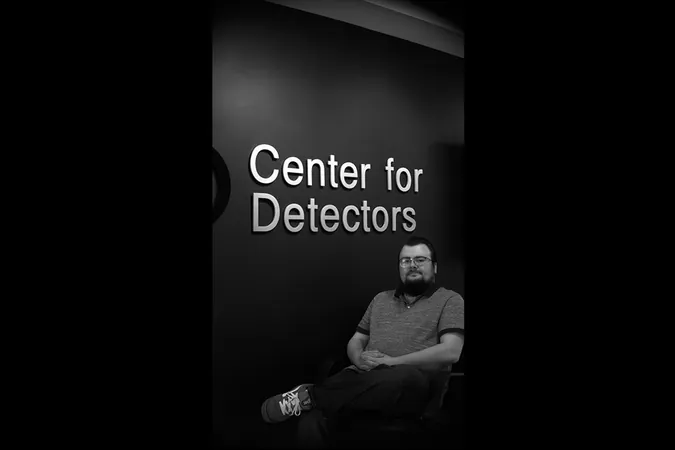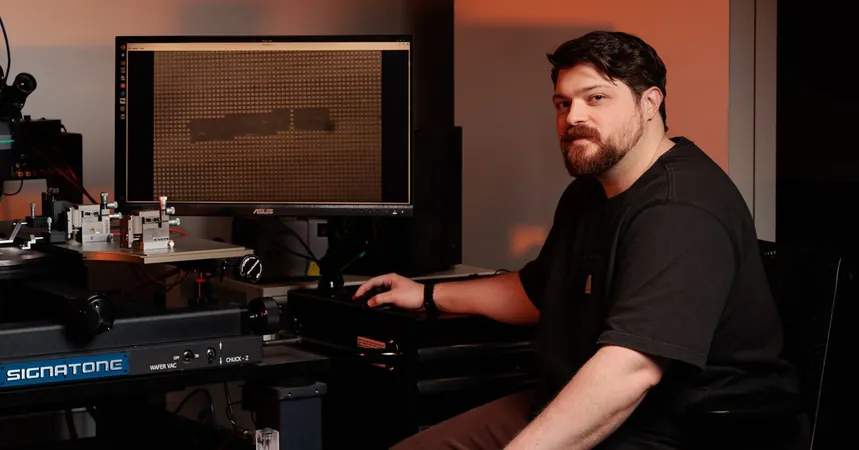
Breakthrough Achieved in NASA's Quest for Alien Life: Center for Detectors Shines Bright with New Imaging Technology!
2025-03-26
Author: Ming
In a stunning advancement towards unraveling the mysteries of the universe, the Center for Detectors has successfully captured its first light using a cutting-edge single photon imaging detector, all thanks to a generous $2.5 million funding from NASA’s Science Mission Directorate and the Space Technology Mission Directorate!
This pioneering project is at the forefront of enhancing single-photon sensing CMOS image sensors, which are pivotal in determining their resilience against the harsh radiation conditions associated with NASA missions. After over a year of meticulous work, the team has reached a crucial milestone by capturing a successful image, marking a significant leap forward in the ambition to detect extraterrestrial life.
Director of the Center, Don Figer, did not mince words about the project's importance, stating, “We are developing technology to detect alien life in the universe. Our work supports the biggest future NASA space telescope mission, the Habitable Worlds Observatory.” This ambitious mission aims to locate and analyze potential habitable zones on distant planets, making the stakes higher than ever.
An interdisciplinary team of experts contributing various skills—ranging from software and optics to mechanical and electrical engineering—has made this groundbreaking achievement possible. Each team member's expertise plays an integral role in perfecting the technology needed to achieve NASA's ambitious goals.
Engineer Justin Gallagher emphasized the challenges of the project, stating, “NASA needs to know how well a detector works before they can use it in a future mission. To measure the presence of life on other planets, detectors in future missions may only receive a few photons of light per hour. We want to show that these new sensors can maintain this extreme sensitivity while exposed to the harsh radiation conditions in space.”
Among the team is Anthony Doan, an enthusiastic third-year computer engineering major. Having joined the center through a co-op program, Doan has been instrumental in developing software that translates sensor readings into images. This opportunity has profoundly impacted his career aspirations, steering him towards a future in aerospace technology. "This job was my first experience where I applied something that I learned in class and actually used it in the work. It’s been amazing. I feel like I found my career path with this," Doan shared.
As this groundbreaking project continues to unfold, the implications for space exploration are monumental. With the goal of detecting alien life within our grasp, the work of the Center for Detectors could very well change our understanding of life beyond Earth. Stay tuned as we keep you updated on the unveiling of new findings that could redefine our place in the cosmos!



 Brasil (PT)
Brasil (PT)
 Canada (EN)
Canada (EN)
 Chile (ES)
Chile (ES)
 Česko (CS)
Česko (CS)
 대한민국 (KO)
대한민국 (KO)
 España (ES)
España (ES)
 France (FR)
France (FR)
 Hong Kong (EN)
Hong Kong (EN)
 Italia (IT)
Italia (IT)
 日本 (JA)
日本 (JA)
 Magyarország (HU)
Magyarország (HU)
 Norge (NO)
Norge (NO)
 Polska (PL)
Polska (PL)
 Schweiz (DE)
Schweiz (DE)
 Singapore (EN)
Singapore (EN)
 Sverige (SV)
Sverige (SV)
 Suomi (FI)
Suomi (FI)
 Türkiye (TR)
Türkiye (TR)
 الإمارات العربية المتحدة (AR)
الإمارات العربية المتحدة (AR)